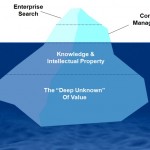



No need to recreate the wheel to answer certain questions. Below are my two suggeted readings to address the question of Flash and SEO integration. The first gives you an update of what can be done today and the second s more of a philosphy and general understanding. Enjoy.
1. Flash Indexing with external resource loading – Google webmaster Central blog
http://googlewebmastercentral.blogspot.com/2009/06/flash-indexing-with-external-resource.html
We just added external resource loading to our Flash indexing capabilities. This means that when a SWF file loads content from some other file—whether it’s text, HTML, XML, another SWF, etc.—we can index this external content too, and associate it with the parent SWF file and any documents that embed it.
This new capability improves search quality by allowing relevant content contained in external resources to appear in response to users’ queries.
To date , when Google encounters SWF files on the web, we can:
2. Even though the below is dated it still holds true. Good job – Geoff Stearns
Search engine optimization is one of the most popular subjects when nerds sit around and talk about Flash. “Does Google index your swf files?” seems to be the most popular question, usually garnering plenty of ‘yes’ and ‘no’ and ‘maybe’ answers. The real answer to this question, once and for all, is this:
It doesn’t matter.
To understand this answer, you need to understand what Flash is. And to do that, you need to understand modern web development philosophy. First off, you need to embrace web standards. Semantic markup and separating content from style and behavior is the only way you should be building your sites. Many web standardistas have been recommending this method of web development for years, and rightly so. However, this post isn’t the place to go into the whys of this type of development, so I’ll skip that part and just say this about how it’s done: There are three areas of front-end web development: Content, Style, and Behavior. You should always keep these three things separated as much as possible.
That brings up the question: “Where does Flash fit into this three pillar method of web development?” Is it content? Is it behavior? Is it style? While it could be considered all three, most professional Flash developers will remove the content from their Flash movies and load it in using Flash remoting or XML files. That leaves us with style and behavior.
Style is added using CSS. Generally when you add images to your HTML that are purely presentational (no text or required content in them) you should add them in using CSS. In most cases you don’t want Google to index them because people don’t search the web for ‘top left rounded corner gif.” They search for content. Even if Google upgrades their crawler someday to read CSS files and index the images, they probably wouldn’t use the information for more than statistical analysis because of this.
Behavior is generally added using Javascript. Maybe you want a new window to open set to a certain size, or you want to use some fancy Ajax to let users rate something without refreshing the page. This should all be added unobtrusively, and if the browser doesn’t support Javascript, it will hopefully still work. Unfortunately, not everyone considers this, and these days Javascript is becoming more and more of a requirement to use most websites. So you should always provide some sort of alternative for non-Javascript users. When it comes to indexing behavior, Google will for the most part not index your Javascript files. Even if it did, most web users would have no idea what the .js file they are looking at actually does. When using Javascript to change your document, Google will not read the ‘final’ page, but only the raw HTML file. Google does not render Javascript.
Now that you know all of this, it’s time to look at how to treat your Flash content. Since we’ve determined we don’t want Google to index our swf files, but we do want it to index the content displayed inside them, what is the best way to go about this?
As stated before, if you are building Flash sites professionally, you probably move all your content out of your Flash movie and into an XML file or keep it in a database. This makes it much easier to allow Google to index this content by using progressive enhancement.
For the rest of this post visit Geoff’s blog at:
http://blog.deconcept.com/2006/03/13/modern-approach-flash-seo/
Yesterday, I had two conversations with two different colleagues of mine and it was interesting how they collided with some very strange relevance.
The first was on the concept of a brute force attack on a cryptographic scheme. Basically the concept of in order to break a 128-bit encryption, one would have to go through ((2128) – 1) bit flops. This is a staggering 340,282,366,920,938,463,463,374,607,431,768,211,455 number of possibilities. So assuming you had a device that could check a billion possibilities per second it would still require 1013 years to exhaust them all. This is a thousand times longer than the age of the Universe.
The second conversation was on the evolution of twitter and the seemingly abstract allocation of 140 characters. It seemed to me that the number of 140 was due to the initial premise that was geared towards SMS which allowed 160 characters, thus leaving a 20 character header for direction. The twitter phenomenon always seemed unusual to me due to its mainly misguided use. The concept is very simple and it is a very useful tool when properly used. So I found it very amusing that one of the most visited sites in terms of web traffic, one of the fastest growing social network sites and one of the largest online membership communities (despite its retention rate) is founded on SMS type usage. It now seems that the cart has lead the horse.
The collision happened when I performed my few minutes of research on twitter and read about the recent passing of the twitpocalypse. This happened June 12th 2009 when the unique identifier associated with each tweet exceeded 2,147,483,747 or ((231) – 1) which is the maximum value for a 32 bit signed integer in computing. For those who do not know, this is a very important number associated with a 32 bit signed integer counting system used in operating systems. So old school computing collided with new school microblogging and the world as we know it still exists. I will revisit this post in the year 2038 when we are faced with the Y2K38 bug.
I am sure we are all familiar with the M&Ms melt in your mouth not in your hand. Well here we can see that Gummies can melt in your car and not in your mouth. In many recent conversations, my favorite color has come up (especially when discussing ice cream, M&Ms, jelly beans and gummies). This past Friday I was given the perfect opportunity to make a defining statement.
Without further delay, my favorite gummie color is the brightish red on the right hand side of the picture to the right. It is RGB – R204, G26 & B24 and Hex -CC1A18. Thanks go to Andrew for the accidental creation of the melted color palette and the use of the new iPhone (demonstrating improved photographic capability) for capturing the moment. If anyone else has any melted or fresh food products that they would like my view point on, please feel free to send them my way. Maybe next post will be around the most engaging yellow of an egg yolk or better yet favorite color from a whole roasted pig.
You have to love the new category Decision Engine – Search, explore & decide. Credit goes to MV for the find.
The ad is well produced, however, does it only show what our pain is? The real question is “What decisions are we trying to make?” Still waiting to see how Bing will handle / understand people and their true preferences as well as predict the process they will go through. Meaning know who I am, understand what I am trying to decide, lead me down a path towards that decision and then give me the ability to make the decision (capture the impulse).
If the old information design definition of the Scent of Information is “The organization of information to reassure a user that they are on the right path for locating the information they are looking for”, then I just described the Scent of Decision.

‘The search for employment is taking longer and is more competitive than it has been in past years,’ said Jason Ferrara, senior career adviser at CareerBuilder. ‘To compensate, some candidates have turned to extreme tactics. While unusual job search antics may attract the attention of hiring managers, they need to be done with care and professionalism so that candidates are remembered for the right reasons.’
Some of the most memorable tactics identified by hiring managers include:
This survey was conducted online within the U.S. by Harris Interactive on behalf of CareerBuilder.com among 2,543 hiring managers and human resource professionals (employed full-time; not self-employed; with at least significant involvement in hiring decisions; non government) ages 18 and over between February 20 and March 11, 2009. With a pure probability sample of 2,543, one could say with a 95 percent probability that the overall results have a sampling error of +/- 1.94 percentage points. Sampling error for data from sub-samples is higher and varies.

Google vs. Bing: The Blind Taste Test
June 7th, 2009 | by Ben Parr
Since Microsoft opened up its new search engine Bing earlier this month, there has been a nonstop flood of people comparing Bing to the current search juggernaut, Google. Does Bing have a better interface? Is it an improvement over Microsoft’s Live search? And most importantly, does Bing provide better results than Google?
While there are a few tools out there that already compare the two search engines, none take the scientific approach quite like BlindSearch does. The experiment, formed by Michael Kordahi, provides search results from Google, Bing, and Yahoo and asks you to vote on which results are best. However, BlindSearch takes your biases out of the equation by stripping away the branding and logos.
 Several years ago I was first introduced to the dreaded unk unk. The Unknown Unknown. Wikipedia provides a nice description “The term unknown unknown refers to circumstances or outcomes that were not conceived of by an observer at a given point in time. The meaning of the term becomes more clear when it is contrasted with the known unknown, which refers to circumstances or outcomes that are known to be possible, but it is unknown whether or not they will be realized. The term is used in project planning and decision analysis to explain that any model of the future can only be informed by information that is currently available to the observer and, as such, faces substantial limitations and unknown risk.”
Several years ago I was first introduced to the dreaded unk unk. The Unknown Unknown. Wikipedia provides a nice description “The term unknown unknown refers to circumstances or outcomes that were not conceived of by an observer at a given point in time. The meaning of the term becomes more clear when it is contrasted with the known unknown, which refers to circumstances or outcomes that are known to be possible, but it is unknown whether or not they will be realized. The term is used in project planning and decision analysis to explain that any model of the future can only be informed by information that is currently available to the observer and, as such, faces substantial limitations and unknown risk.”
The relationships between knowledge you as an individual has and the knowledge someone else has is a liberating realization. It is depicted in the above diagram here with reference to a specific topic haivng the scenarios of:
Appreciating that this is fairly abstract and applies to many personal and professional situations. In business, this concept is an excellent starting point for beginning to understand the value of information management. When coupled with Delivering Contextual Sense you start to see the successful underpinning of getting the right knowledge to the right people at the right time. You can think about the example of the conversation between Mother and son and see how information passed from one to someone else.
In summary, there are four primary business situations that informaiton technology, information management, enterprise search and content management try to address (IT/IM/ES/CM):
How does that happen? Contact me at robi@robibanerjee.com for a more spirited discussion.
 I once read in a study that over 50% of Americans are unhappy with their job. There is another study that states that over 90% of people who lose their job are dissatisfied with how it was handled. Assuming these statements are true, there is a problem in today’s marketplace with the process in which people are managed and how they move on in their careers. Who is the big loser in this overall situation? It is my point of view that it is the organization.
I once read in a study that over 50% of Americans are unhappy with their job. There is another study that states that over 90% of people who lose their job are dissatisfied with how it was handled. Assuming these statements are true, there is a problem in today’s marketplace with the process in which people are managed and how they move on in their careers. Who is the big loser in this overall situation? It is my point of view that it is the organization.
Planned turn over or culling is an important part of any business. It is important for all stakeholders to accept this. If employees become complacent then they are doing themselves and those around them an injustice. And if a business fails to plan for culling it is both putting itself in harm’s way and hurts its growth opportunities, which again is bad for everyone. Managing expectations is critical.
The United States of America plans to completely revamp its leadership every four / eight years with the appropriate system of checks and balances. Yet, many businesses struggle with the concept. There are many models / organizations that grasp this concept out of necessity. In division I basketball, Duke a recognized powerhouse acts as a feeder system to the NBA. It has accepted the arena it exists in and excels. Many companies plan for this turnover and establish great alumni relations resulting in the same feeder concept in business. It is common for young, talented and motivated individuals start out in a big four accounting firm and either become a partner or move on with the recognition of having worked in an elite organization.
Having seen firsthand many employment models ranging from companies who never let employees go to those that judged incredibly quickly and cut, it is my observation that little to no emphasis is placed on truly capturing an employee’s thoughts on their role, their relationships or their knowledge in a meaningful manner. This is something that can be remedied by understanding basic people dynamics and putting policies, enabled by technology / social media in place.
Organizations put such an emphasis on people being the most important asset. Therefore they place a priority on finding, recruiting and interviewing. How much time is spent when people are leaving, voluntarily or involuntarily? More importantly, how much time was spent preparing to harvest their thoughts and relationships? The real measurement of success will be when an employee assists in populating that knowledge for the betterment of the company, starting with the day they are hired and ending with the day the leave. Can this be done? Yes.
To find out more contact me at robi@robibanerjee.com.
 Everyone once in a while we all turn to the web for motivation or mental reprieve. This morning, I visited one of my favorite company’s website fahrenheit-212.com to check on some old friends. This led me to their parent company Saatchi & Saatchi where I was instantly captured by the Ideas Gallery.
Everyone once in a while we all turn to the web for motivation or mental reprieve. This morning, I visited one of my favorite company’s website fahrenheit-212.com to check on some old friends. This led me to their parent company Saatchi & Saatchi where I was instantly captured by the Ideas Gallery.
http://www.saatchi.com/worldwide/ideas_gallery.asp
Definitely worth the few minutes of mental vacation (see more detailed reviews posted on expedia.com). Here was my take:
 Recent thoughts around Enterprise Search (ES) / Content Management (CM) and the importance of people and process gave me the opportunity to pause and reflect. It has always been my perspective that a value proposition must exists for individuals to adopt a new form of interaction or communication. Meaning, what is in it for me.
Recent thoughts around Enterprise Search (ES) / Content Management (CM) and the importance of people and process gave me the opportunity to pause and reflect. It has always been my perspective that a value proposition must exists for individuals to adopt a new form of interaction or communication. Meaning, what is in it for me.
The concept of ES/CM from a business perspective is simple… give my employees / coworkers better tools to be more productive. However, the value proposition to the employee / coworker sometimes gets muddled. They need to be genuinely involved in the success of the ES/CM initiative and in some manner achieve a “special feeling.” There are many ways to address that ranging from recognition and respect to compensation and rewards. So assuming you have the people part resolved by creating that compelling value proposition (individuals contribute towards improvement and use of the tools), this brings up the topic of Process.
A friend of mine, Robert J. Hiebeler, once wrote this to me to share his thoughts on process.
What are processes? Simply stated, processes are the “steps of doing”. When we have a fundamental focus on doing, we begin to get to the importance of purpose…Why is all of this information necessary? It’s necessary to get something done….to accomplish a goal. We also get to a focus around the individual users needs. So with a stronger focus on doing, and a clearer linkage to purpose, we also get to the key questions about all information, knowledge and learning content:
The focus on doing (and process) becomes the essential organizing question. When we get to the question: “What do you want to do today?”, we create a liberating focus and linkage to purpose, and it helps sort through all the information and knowledge clutter. By focusing the question on doing, we also get more quickly to a focus on clear goals and specific desired results.
The power of people and process needs to be understood for the value of ES/CM to be realized. These thoughts are the organizing philosphy for a betterway to approach colaboration and are just the tip of the icerberg. For a more vibrant discussion contact me at robi@robibanerjee.com.